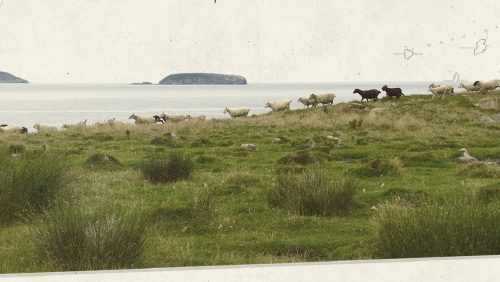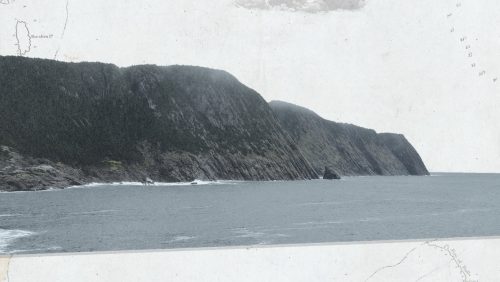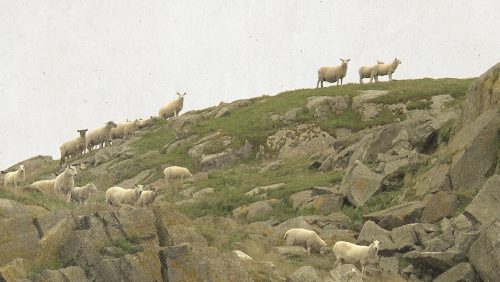Hungry Month of March
Rosemary House
2017
The demand for local foods is expanding worldwide. The spotlight is no longer just on local produce, meat, and seafood; it’s expanded to include prepared foods, dry groceries, and even canned and jarred products. Consumers want to trace their foods from start to finish and are often seeking direct relationships with local farmers and artisanal producers year-round. The trend continues across the world’s restaurants menus with chefs procuring the freshest hyper-local ingredients and preserving them for year-round use.
Now travel to one of the farthest reaches of the world, for the story of one of the most formidable local food movements. Possessing an unsurpassed pride in place, an incredibly challenging climate, and in a time where everyone is choosing more local foods globally, nowhere is this evidenced more than Newfoundland and Labrador. Venerated Canadian filmmaker Rosemary House weaves a tale through the seasons, where traditional food ways have either been practiced for years or are being bravely re-introduced by a new league of brazen farmers, fishermen, foragers and restaurateurs. These are the unique stories of the people behind the food, agriculture, tradition and culture of what could really be any small community, in any town, anywhere in the world.
This is a return to tradition with ingenuity and tenacity… this is the Hungry Month of March.
Hungry Month of March is the story of the fishers, farmers, hunters and foragers who supply the new Newfoundland cuisine. This flowering of haute cuisine in a remote and harsh northern landscape is a kind of rediscovery of who we are. Our identity springs from the heart of a hungry winter, when feeding ourselves took all our time and ingenuity.
This most easterly Canadian province, the planet’s 15th largest island, has 18,000 miles of coastline, sparsely populated by fishermen and their families who once searched for harbours to build a house, and to fish from. But before roads, when winter came and the harbours froze, you only ate what you had got.
By March month, provisions began to dwindle, and hunger became threatened. Those times are gone now but chefs who follow a seasonal, local aesthetic, cooking only with what they’ve managed to store and preserve, are still faced with familiar challenges come the hungry month of March.
But despite a hard climate, the land and sea is bountiful. There’s thousands of moose, hares and bears. Millions of birds. The berries and the bees. The codfish is still king. (If you could only have a couple of sheep, as my Aunt Marion would say). The suppliers behind our new local food movement have a perspective on the essential elements of life that seem to have vanished in the 21st century, but are nevertheless at the core of who we are and what we eat.
Long description
Right up until the 1960’s there were no roads connecting the remote outports strung along the 18,000 miles of Newfoundland’s coastline. Supplies had to come by boat into the harbours where fishermen and their families had settled. And when the harbours froze solid in winter, you only ate what you had got. It was bad news if winter came early, if someone was sick, if guests came out of the blue, if berries were sparse, if the garden didn’t grow, if fishing was poor.
You might be staring hunger in the face. You might be facing a long and hungry month of March. Waiting for the ice to break and the first boats to bring flour and molasses and rum, waiting for the first living things to show their face in the woods and at the shore. Children down on the beach in their bare feet, hunting for mussels, because that was all they were going to get to eat.
The hungry month of March is a thing of the past, but a recent flowering of haute cuisine in this easternmost Canadian province is steeped in the traditions of that cultural touchstone. Keeping ourselves fed once took all our time and tenacity. Then, as now, the vital link has always been the suppliers, the people who forage, fish, farm and hunt for food on and around this giant rock, the 15th largest island on the planet. The bounty of nature is truly immense in this northern land, but the environment is harsh. Winters are long. Summers are fleeting.
Hungry Month of March features fourteen short films profiling ten suppliers who do the kind of work that almost everyone in Newfoundland used to do. These men and women connect us back in time to a cultural identity forged in the heart of a hungry winter.
The big question facing every Newfoundland chef in March is how to put food on the plate that’s interesting, delicious and beautiful while remaining true to the aesthetic of freshness, of local, seasonal food (all while anxiously anticipating the first signs of spring).
What gives the emphasis on local food a fresh twist in these globalized times is the lurking issue of food security. As a people, Newfoundlanders went from producing a healthy percentage of their own food to producing a small fraction. Everything now comes by ferry from the mainland of Canada, an 8 hour journey across the Gulf of St. Lawrence. Three short days without the ferries and the supermarket shelves in Newfoundland begin to go bare.
It seems we can all learn something from the purveyors in the Hungry Month of March – Jeremy Charles at his organic farm in St. John’s, Keith Morry and his pre-salé lambs on Ship Island, Marie and Aubrey Payne at the cod-pot fishery on Fogo Island, Lori McCarthy foraging at the seashore in Avondale, Alf Coffin’s garden by the sea in Joe Batt’s Arm, Murray McDonald and the quintessential root cellar, Peter Burt making salt from the sea at Logy Bay, Alan Ash snaring rabbits in Hants Harbour. They have a perspective on the essential elements of life that is almost lost in our the global community, but is still nevertheless at the core of who we are, and what we eat.
Images
Loading...

Download
Loading...

Download
Loading...

Download
Team
Rosemary House
Writer, Director and Co-producer
Photo
Annette Clarke
Executive Producer
Photo
Photo : Dave Howells
Credits
WRITTEN BY
Rosemary House
VIDEO DIRECTED AND EDITED BY
Rosemary House
DESIGNED BY
Aubyn Freybe-Smith
ILLUSTRATIONS BY
Bruce Alcock
DEVELOPED BY
Patrick Matte
PRODUCED BY
For the NFB
Annette Clarke
Dana Dansereau
Nicholas Klassen
For Rock Island Productions
Rosemary House
CINEMATOGRAPHY
Nigel Markham
STILLS PHOTOGRAPHY
Rosemary House
LOCATION RECORDING
Mark Neary
Matt Thomson
Scott Mayo
SOUND DESIGN
Joshua Stevenson
SOUND EDITING AND MIXING
Lori Clarke
FEATURING
Alan Ash
Alf Coffin
Aubrey and Marie Payne
Chef Murray McDonald
Chef Peter Burt
Clyde Boland
Jeremy Carter
Keith Morry
Lori Butler McCarthy
EXECUTIVE PRODUCERS
Annette Clarke
Rob McLaughlin
ASSOCIATE PRODUCER
Kelly Davis
PROJECT MANAGER
Laura Mitchell
TECHNICAL DIRECTOR
Dana Dansereau
STUDIO ADMINISTRATORS
Carla Jones
Leslie Anne Poyntz
PRODUCTION SUPERVISOR
Roz Power
PRODUCTION COORDINATORS
Jasmine Pullukaat
Stacey Sellars
TECHNICAL COORDINATOR
Christopher Macintosh
MARKETING MANAGER
Paule Béland
PUBLICIST
Pat Dillon-Moore
WEB MARKETING
Kathryn Ruscito
SYSTEM ADMINISTRATION
Bruno Gervasi
Sergiu Raul Suciu
BUSINESS AND LEGAL AFFAIRS
Stephanie L’Écuyer
CO-PRODUCED BY
Rock Island Productions
National Film Board of Canada
Produced with the participation of the
Newfoundland & Labrador Film Development Corporation
Media Relations
-
About the NFB
The National Film Board of Canada (NFB) is one of the world’s leading digital content hubs, creating groundbreaking interactive documentaries and animation, mobile content, installations and participatory experiences. NFB interactive productions and digital platforms have won over 100 awards, including 21 Webbys. To access this unique content, visit NFB.ca.